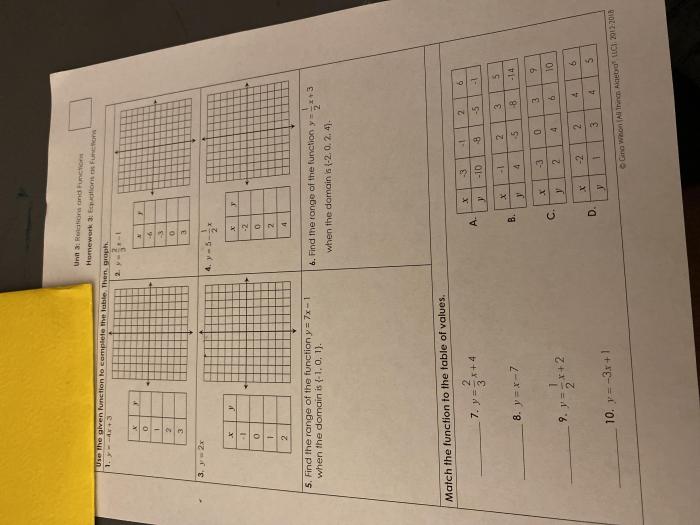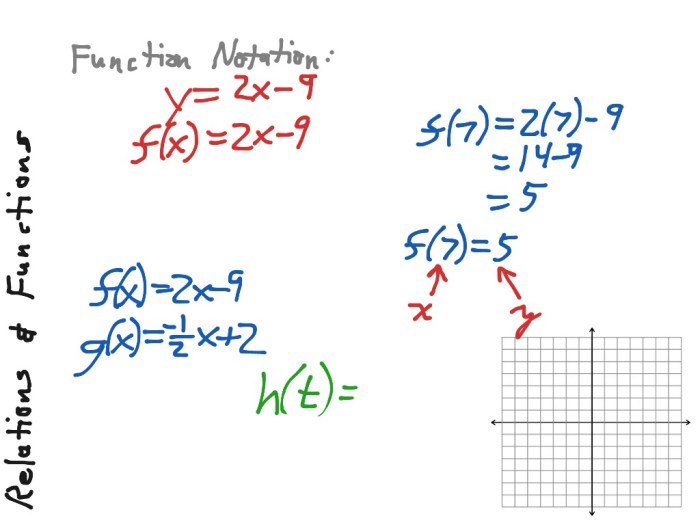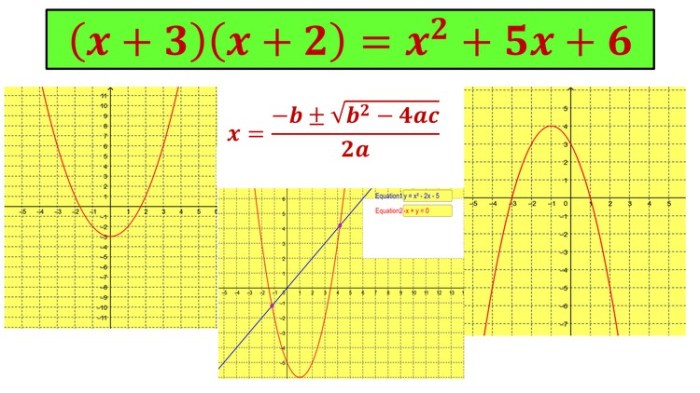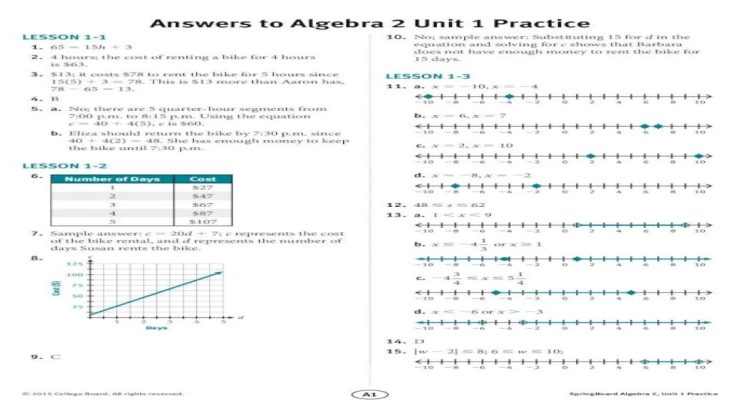Algebra 1 unit 3 test relations and functions answer key – Embark on an enlightening journey with the Algebra 1 Unit 3 Test: Relations and Functions Answer Key, a comprehensive guide that unlocks the intricacies of these mathematical concepts. This answer key provides a clear understanding of the fundamental principles of relations and functions, equipping you with the knowledge and skills to excel in this unit.
Delve into the fascinating world of mathematics as we explore the different types of relations and functions, unraveling their domains and ranges. Discover the power of function notation and witness the art of graphing functions. Master the techniques of solving systems of equations and inequalities, empowering you to tackle real-world problems with confidence.
Overview of Unit 3: Relations and Functions

Unit 3: Relations and Functions introduces the fundamental concepts of relations and functions, which are essential building blocks in mathematics. Students will learn to identify and classify relations and functions, understand the concept of domain and range, and explore various types of functions, including linear functions and systems of equations.
Domain and Range
Domain refers to the set of all possible input values for a function, while range refers to the set of all possible output values. To find the domain and range of a function, examine its graph or equation. The domain is determined by the x-values, and the range is determined by the y-values.
Function Notation
Function notation is a concise way to represent a function. It uses the symbol f(x) to denote the output of the function for a given input x. Function notation allows for easy evaluation and manipulation of functions.
Graphing Functions, Algebra 1 unit 3 test relations and functions answer key
Graphing functions involves plotting points on a coordinate plane based on the function’s equation. The graph provides a visual representation of the function’s behavior, allowing for easy identification of key features such as intercepts, slopes, and asymptotes.
Linear Functions
Linear functions are characterized by a constant rate of change, known as the slope. They are represented by equations in the form y = mx + b, where m is the slope and b is the y-intercept. Linear functions are commonly used to model real-world phenomena with a constant rate of change.
Systems of Equations
Systems of equations involve two or more equations with multiple variables. Solving systems of equations requires finding values for the variables that satisfy all equations simultaneously. Various methods, such as substitution, elimination, and graphing, can be used to solve systems of equations.
Inequalities
Inequalities are mathematical statements that compare two expressions using symbols such as <, >, ≤, or ≥. Solving inequalities involves finding the values of the variables that make the inequality true. Inequalities have applications in various fields, including optimization and modeling real-world situations.
Applications of Functions
Functions find widespread applications in various fields, including science, engineering, economics, and social sciences. They are used to model real-world phenomena, analyze data, make predictions, and solve problems. Understanding functions is crucial for success in many academic and professional endeavors.
FAQ Resource: Algebra 1 Unit 3 Test Relations And Functions Answer Key
What is the difference between a relation and a function?
A relation is a set of ordered pairs, while a function is a relation where each input corresponds to exactly one output.
How do I find the domain and range of a function?
The domain is the set of all possible input values, and the range is the set of all possible output values.
How do I graph a linear function?
To graph a linear function, find the slope and y-intercept, and then plot two points on the line.




